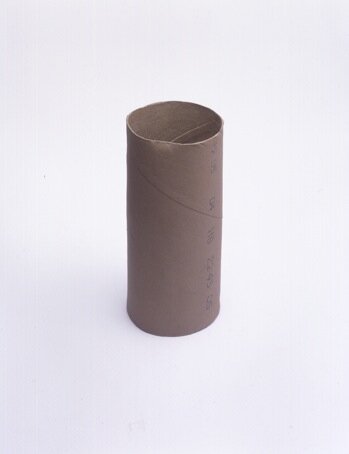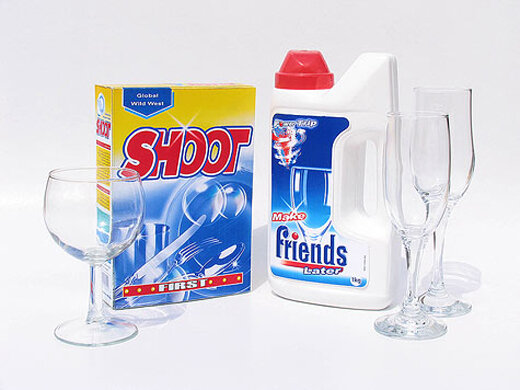How will the supermarket change after Coronavirus?
The Coronavirus pandemic, as well as disrupting our daily routines, has had a significant impact on our vocabularies. Hitherto unfamiliar, barely used – or even previously non-existent – terms are now confidently peppered into our (mostly digital) conversations: social distancing, self-isolation, stockpiling, and panic buying. Hearing them conjures similar images in all our minds right now. Across the globe, people are engaging in the same patterns of behaviour in a joint effort to flatten the curve and help slow the spread of the virus. It is a moment of global unity unlike any other in recent history, even if this unity is being fostered from the safety of our homes.
Hiding in the City by Liu Bolin, 2005-ongoing, (c) the artist
At the time of writing, most European countries have enforced some form of quarantine, meaning that citizens are only allowed out of their homes for essential reasons, such as buying groceries. It is advised however that even these activities are done infrequently and that everyone adheres to keeping a two-metre distance from each other, and preferably wears a face mask. As social spaces and public areas close down in keeping with official measures, one of the only spaces where we can continue to be in the physical company of humans, other than whom we are isolating with, are grocery stores and supermarkets.
The majority of our interactions have migrated to the digital sphere, but when the inevitable time comes to restock the fridge and the kitchen cupboards, we still go out and meet cashiers, shop assistants, and fellow shoppers who might require help. Of course, all while continuing to keep our distance and minimise physical contact with others as much as possible.
The virus has redefined all areas of life, changing our experiences of the world.
Artists have been interested in the theme of the supermarket and its function within a consumerist society for a long time – think of Pop Artists like Andy Warhol, or conceptual artist Barbara Kruger. In light of the recent significant changes to our lives, artworks exploring the idea of the supermarket have acquired a renewed urgency and poignancy. Revisiting some of these works from our current perspective feels eerie at times. It is almost as if the artists had a prophetic foresight highlight just how dependent our society is on supermarkets. This has only become more apparent since the pandemic entered our lives.
The End of the Roll by Gavin Turk, 2005, (c) the artist
Initially as news of Italy’s lockdown spread around the world, people rallied to supermarkets to bulk-buy packs of toilet roll, hand sanitiser and dried foods. British artist Gavin Turk responded in three perfectly timed posts on his Instagram page, recalling his 2005 trompe l’oeil sculpture The End of the Roll showing a bronze cast of a cardboard toilet roll tube, which has been painted to look like cardboard again. Turk posted his artwork alongside recent images of empty supermarket shelves in Britain, once stocked with the coveted item. The third image is a black and white photo of Turk holding his sculpture in a glass case, posted with the caption:
“with a playful reference to Piero Manzoni’s ‘Merda D’Artista’: when the artist presented cans of his own shit as art. Gavin Turk’s work challenges ideologies through re-cycling, re-appropriation, re-contextualisation and waste. The audience might also see the tube take on a new life as a telescope - an object that challenges the viewer’s perspective.”
The implication is subtle, but acutely topical as Turk satirises how such a humble object has transformed as a result of the pandemic into one of the most sought-after commodities. The work itself asks the viewer to re-examine their relationship to toilet rolls, and indeed to other grocery items, much in the same way that we now have to reassess almost all aspects of our lives. In this new social landscape, it is possible that what was once an inexpensive necessity will become the new indicator of wealth. Status and economic prosperity will be measured by access to groceries and well-stocked pantries, rather than by expensive cars, jewellery or holidays.
Our relationship to supermarkets, re-examined
Supermarket by Xu Zhen, 2007, (c) the artist
The supermarket then, now more than ever, has become an indispensable cornerstone for our existence and survival. The new regulations regarding dedicated shopping times for the elderly and for keyworkers, along with limitations on the number of items that can be bought at once can feel disconcerting. Certainly, it is a drastic change from the seemingly inexhaustible choice that we are accustomed to. But these changes also crucially offer a sense of security in that it ensures a continuous and equal access to goods for everyone. The threat of empty supermarket shelves and a lack of resources is explored in Xu Zhen’s Supermarket installation first ‘opened’ in 2007. The Chinese artist created what appears to be a fully stocked grocery store complete with a functioning cash register. Upon closer inspection we see that all the items on the shelves are empty. The viewers can purchase the empty packaging, and the item will be restocked, much like a real supermarket. Xu Zhen’s works critique the nature of global capitalism as engendering a climate of endless supply-and-demand and senseless mass consumption and the prevalence of advertisements. As such, Supermarket asks the viewer to invest money in the useless shell of the product – the symbol of capitalism – rather than the substance of the grocery goods themselves.
Supermarket by Xu Zhen, 2007, (c) the artist
The artist further intends Supermarket as a parody of “a consumerism prevalent in China” explaining how the once-bustling open air food markets of Shanghai selling fresh local produce, which were as much spaces of socialisation as of commerce, have in recent years been transformed into Western-style supermarkets and fast food restaurants.
As the world adjusts to a post-Coronavirus age, the issue of large supermarket chains wiping out smaller local food shops and markets seems to be cropping up once again. People are being encouraged to turn to their local grocers, especially outdoor markets, instead of supermarkets. Not only because people wish to support smaller businesses as customer numbers have declined dramatically due to self-isolation, but also because they are well-stocked and less busy than a supermarket. Whilst Xu Zhen’s work was created in response to his local Chinese society, it could now address the same questions to the global population: What is our relationship to the supermarket? What happens to our local markets?
Other artists, such as the Chinese Liu Bolin explore the power of consumerism and objects over the human body – a topic which has gained potency now that we are being asked to have a readily-available array of groceries at home in the eventuality of a strict self-isolation. Bolin’s Hiding in the City photography series started in 2005. The artist does not use Photoshop to create these images, instead, he camouflages himself until he blends almost seamlessly into his surroundings which are often the interiors of commercial supermarkets. He dissolves completely into the fabric of the store, eschewing his human form for that of the consumptive object. Not only does his work show the control of objects over our lives, but it can also come to symbolise how much of our survival depends on a continuous availability of groceries – the sustained existence of the supermarket becoming enmeshed with the existence of humanity itself.
Hiding in the City by Liu Bolin, 2005-ongoing, (c) the artist
Supermarkets: the new social space?
But supermarkets could also become a place of remote socialisation and creative communication in an otherwise distanced world. The proposed method by Iranian Farhad Moshiri and Shirin Aliabadi uses items that can be bought in supermarkets as a medium for wordplay and poetry. Operation Supermarket is a 2006 project, born out of Iranian oral culture and its obsession with poetry, but also out of an interest in commodity fetishization. Works such as Shoot First Make Friends Later (below) clearly have a darker undertone masked by a veil of humour and presented in the form of household detergent labels. Could we imagine a world in which objects on supermarket shelves become more than commodities? Farhad and Aliabadi open up the possibility of communication with, and through the supermarket, which are currently one of the last places that large numbers of people can frequent.
Shoot First Make Friends Later (Operation Supermarket) by Farhad Moshiri and Shirin Aliabadi, 2006, © the artists
What can we expect?
The world is rapidly transforming, even when all of us are staying at home. It is difficult to imagine what our society will look like after Coronavirus, and indeed even during this period of social distancing. So far, we have seen creative innovations in the use of digital communication systems by theatres, orchestras and museums. We have witnessed universities and schools shifting to remote teaching. Everything is changing around us, so it seems logical that the way we view and interact with supermarkets will also undergo drastic changes. That may mean that supermarkets become the new luxury brands. Or even the direct opposite, people will abandon them in favour for smaller businesses. In any case, artists will continue to engage with the social space of the supermarkets like they have been doing in preceding years. For even if everything else is up in the air for now, we can continue counting on our creativity.






